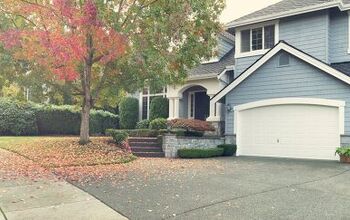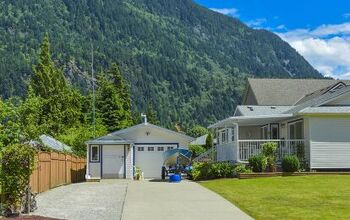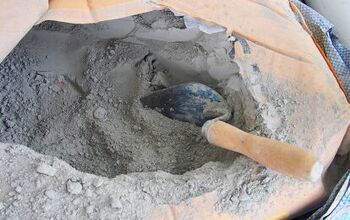Can You Put A Bounce House On A Driveway? (Find Out Now!)

So, you’ve got great plans for your new bounce house, but you need to figure out where the best location is. Is it going to harm your grass? Is the cement going to scratch the floor? Will Gravel be able to pop it?! So the question remains, can you put a bounce house in your driveway?
Putting a bounce house on your driveway is fine, as long as the surface is free of sharp items like pebbles, dry, prickly weeds, mulch, or sticks. Concrete, asphalt, grass, and dirt are the most often used surfaces. The most kid-friendly and easiest to secure stakes in is grass or soft ground.
In this article we will discuss the risks of setting a bounce house on a driveway. Furthermore, we’ll talk about the best places to set a bounce house so your children can enjoy playing in it.
Don't want to do it yourself?
Get free, zero-commitment quotes from pro contractors near you.

Where Is The Best Place To Put A Bounce House?
The most important consideration to take in right away is your power supply. You’ll need to be within an extension cord’s reach of a plug if you don’t have a generator to connect your air blower into.
Remember that there will be crazy and fun activities going on around this bounce house, as well as potentially some water, depending on the sort of bounce house you choose.
When considering the power supply, keep in mind that safety isn’t always the first item on children’s minds once the games begin. Electrical cords should not be wrapped around the bounce house or in an area where youngsters will be running all the time.
The Surface Should Be Level
Next, locate a huge area with a level surface. It must be large enough to accommodate not only the bounce house but also space for children or people to run around. Allow adequate space on all sides to jump off or run around a home, automobile, fence, or other toys.
While grass is the greatest option, it can also be set up on concrete or asphalt if you have a good technique to hold it without requiring tie-downs, such as sandbags.
Watch Out For Sharp Objects
Avoid any sharp objects, such as stones, mulch, or sticks, as well as low-hanging branches or power wires. Toys, hoses, and yard furniture should all be removed.
Because children may be incredibly inventive, it’s a good idea to keep all other outside toys, such as bikes or scooters, away from the bounce house to avoid the temptation of putting anything on it that shouldn’t be.
Consider The Clean-Up
Another thing to think about while choosing a spot to set up is the clean-up. Although setting up the bounce house on freshly cut wet grass or directly next to a sandpit won’t injure the bounce house, every individual who runs through the grass or sand will track part of it onto the bounce house, making clean-up that much more difficult.
There are some strategies for cleaning up these kinds of messes, but if you have the opportunity, it’s sometimes preferable to avoid them completely. Set up your bounce house away from anything that could be tracked into it.
Will The Bounce House Kill My Grass?
This is a fantastic and frequently asked question. Regrettably, there are a variety of answers available on the internet. According to our research and experience, the answer is very dependent on the weather and the position of the sun on that particular day.
Someone had built up a comparable water slide tarp in their backyard for our kids and their cousins a few summers ago. It was a blast, however, the grass was yellow when they attempted to move the tarp after only around 4-5 hours!
The sun was shining brightly that day, and it was constantly beating down on our dark-colored tarp, which was effectively suffocating the grass beneath it in what were most likely extremely hot temperatures.
Can I Leave My Bounce House In the Same Place?
Some websites claim that leaving your bounce house in the same location for a few days is fine. This may be true in some circumstances, such as in lower temperatures or in the shadow away from direct sunlight.
The easiest way to answer that question is to look at the sun. If you’re worried about your bounce house sitting in the same spot for too long, rotate it, but ultimately, keep an eye on the weather and stay out of direct sunlight for long periods of time.
To be honest, it was too hot for the youngsters to play outside all day without getting heatstroke. So, we advise you to bring them inside for water breaks and to get out of the sun because it was the dead of summer.
If it’s one of those days where you’re bringing your kids in for water breaks because you’re worried about heatstroke, don’t leave the bounce house out in the sun for hours. The bounce house, on the other hand, should not destroy your grass if it is moved every few days on a regular gloomy day.
Don't want to do it yourself?
Get free, zero-commitment quotes from pro contractors near you.

Can You Set Up A Bounce House Indoors?
ABSOLUTELY! You can utilize your bounce house indoors! If you live in a location where winter lasts a few months longer than you would like, so the bounce house comes in handy on days when the kids have more energy than your house can handle and there’s simply too much ice and snow to play outside.
When you use the bounce house indoors, you can play an entirely new set of games than when you use it outside. For example, some kids enjoy piling pillows or stuffed animals in the bounce house or at the bottom of the slide, which most people wouldn’t allow if it were outside.
Obviously, the most important factor to consider is room. Gyms and other open public spaces usually have plenty of space. However, if you want it to be set up in your home, you may need to think about it further.
Make Sure You Measure The Space
Measure the space and bounce house you’re thinking about buying to make sure there’s enough area above and around for the youngsters to play securely.
Open basements and lengthy hallways are frequently the ideal locations for a range of the smaller bounce houses on the market.
One thing to remember when measuring a room or possible tight quarters that we didn’t consider was that the air supply tube from the blower to the actual bounce house is around 3-4 feet long, with another half-foot or more for the blower.
This huge tube must have enough area to stay straight and full in order to maintain a consistent supply of air to the bounce house in order for it to remain inflated and safe. Even if a room is large enough, we may need to get creative with this tube region and use a doorway or corridor with an outlet.
Most bounce house dimensions don’t include this length because they only state the area of the play area’s actual base; nonetheless, these extra few feet are necessary for your bounce house to stay inflated.

Heather is a passionate writer who loves anything DIY. Growing up, she learned everything from home repairs to design, and wants to share her tips with you. When she's not writing, she's usually hiking or searching for her next DIY project.
More by Heather Robbins























![Cost To Drill A Well [Pricing Per Foot & Cost By State]](https://cdn-fastly.upgradedhome.com/media/2023/07/31/9074980/cost-to-drill-a-well-pricing-per-foot-cost-by-state.jpg?size=350x220)



